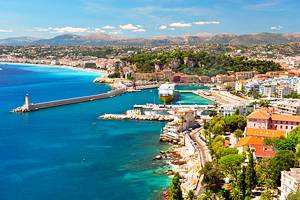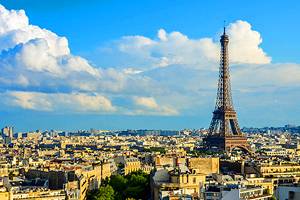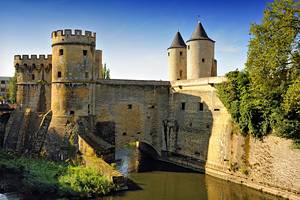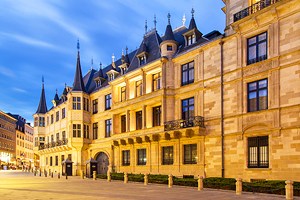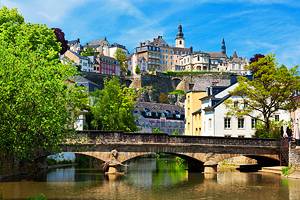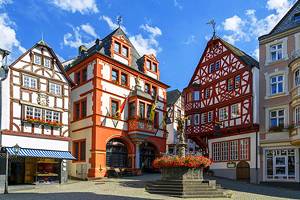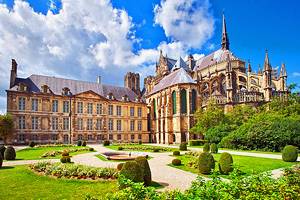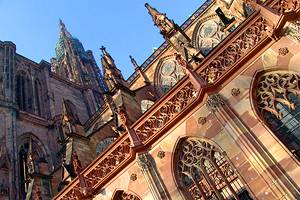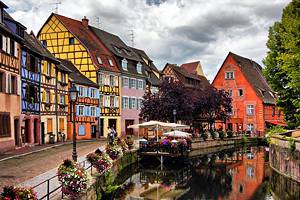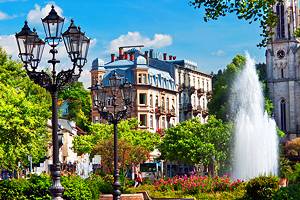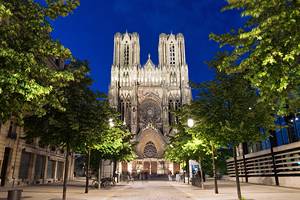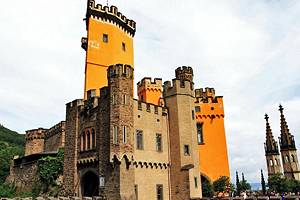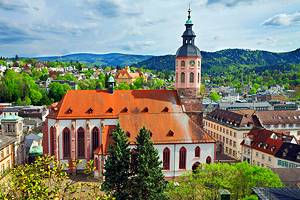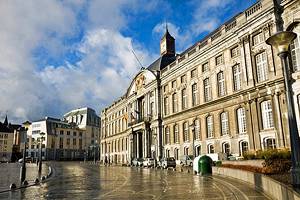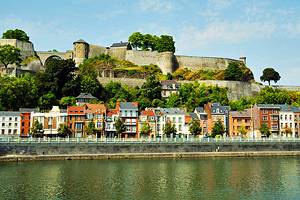Attractions & Things to Do in Metz
Author Lisa Alexander spent two years living in France and has traveled the country extensively.
Impressive monuments, a picturesque riverside setting, and atmospheric neighborhoods give Metz its special charm. Within the city's quaint historic center are narrow cobblestone lanes, lovely old buildings, and a magnificent Gothic cathedral.
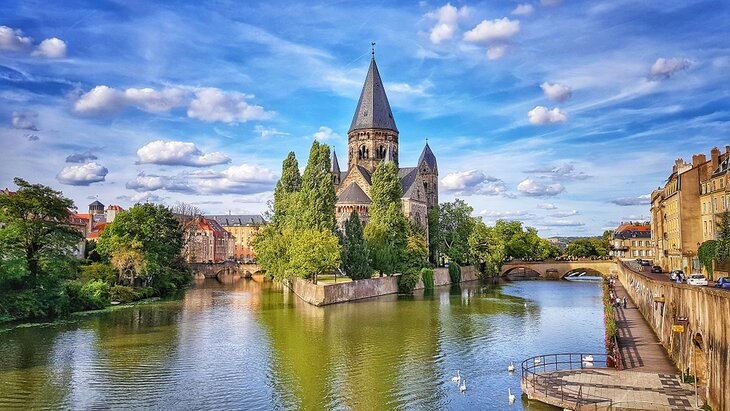
Because of its exceptional cultural heritage, Metz has earned the title of "Ville d'Art et d'Histoire" (City of Art and History).
Visitors will enjoy wandering the ancient streets, discovering awe-inspiring historic churches, and admiring masterpieces of art at renowned museums.
After sightseeing at the essential tourist spots, travelers can change gears and experience the city like a local by shopping at trendy boutiques and unique shops, strolling through the leafy parks, and relaxing at sidewalk cafés.
Learn about the best things to do in and around the city with our list of the top attractions in Metz, France.
Cathédrale Saint-Etienne
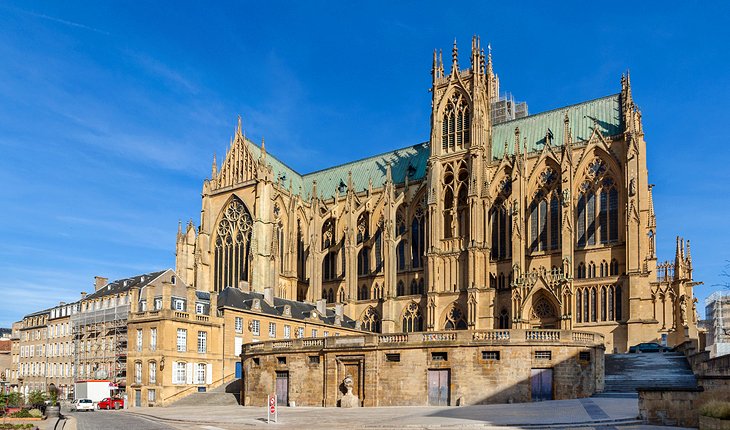
A jewel of Gothic architecture, the Cathedral of Saint-Etienne soars high above the surrounding buildings of the Colline Sainte-Croix, the historic center of the city.
This splendid cathedral is one of the tallest Gothic buildings in Europe with a nave reaching 42 meters high, while its slender towers and delicate spires ascend even higher towards heaven. The cathedral was built between 1250 and 1380 on a unified plan, incorporating the earlier Church of Notre-Dame-la-Ronde.
The facade features beautiful reliefs, including the Portail de la Vierge (Doorway of the Virgin) created in 1240.
The interior of Metz's cathedral has an overwhelming effect, with its grandiose scale and marvelous stained-glass windows, which allow sunshine to brighten the sanctuary. Because it is so brilliantly illuminated, the cathedral is fondly called "The Lantern of God" ("La Lanterne du Bon Dieu").
The cathedral has 6,500 square meters of colorful stained-glass windows, dating from the 13th to the 20th centuries. The 14th-century rose window on the west front and 16th-century windows in the choir and transepts are especially noteworthy.
Modern stained-glass windows (created by Jacques Villon in 1957) adorn the Chapelle du Saint-Sacrement. Abstract windows from the 1950s by Bissière grace the towers.
The cathedral also boasts three stained-glass windows created by Marc Chagall in 1960 and a marble bishop's throne of the Merovingian period in the choir.
Address: Place d'Armes, Metz
Centre Pompidou-Metz
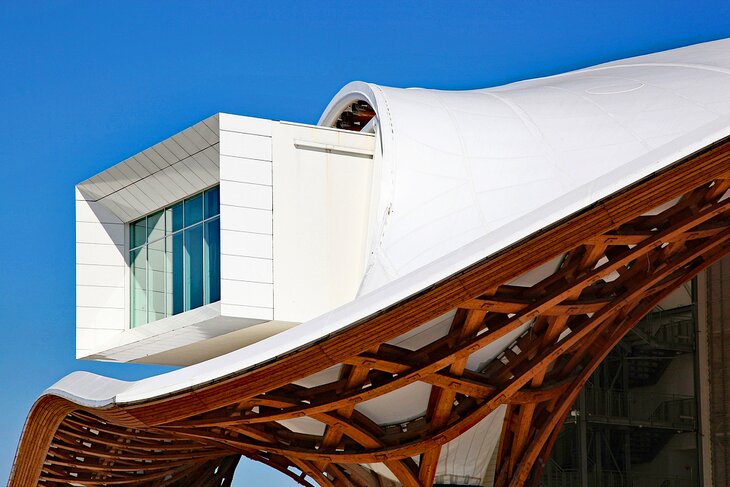
The Centre Pompidou-Metz is the sister organization to one of the top museums in Paris.
Opened in 2010, this daring art museum presents masterpieces on loan from the Centre Pompidou in Paris, which has a collection of 120,000 pieces. Representing a wide array of modern and contemporary art, the Centre Pompidou collection contains artworks created from 1905 to the present.
Designed in Surrealist architectural style, the Centre Pompidou-Metz is surrounded by gardens and has 10,700 square meters of exhibition space with expansive windows that allow in natural light.
Despite the association with the Paris museum, the museum in Metz is an independent organization, which offers its own programs (including music concerts, fashion shows, film screenings, and dance performances). Through its engaging exhibits, the museum encourages viewers to interpret and appreciate modern and contemporary art.
The museum is open every day year-round, except Tuesdays and May 1st. Guided tours, led by certified lecturers, are available.
Address: 1 Parvis des Droits-de-l'Homme, Metz
Official site: https://www.centrepompidou-metz.fr/en
Musée de la Cour d'Or
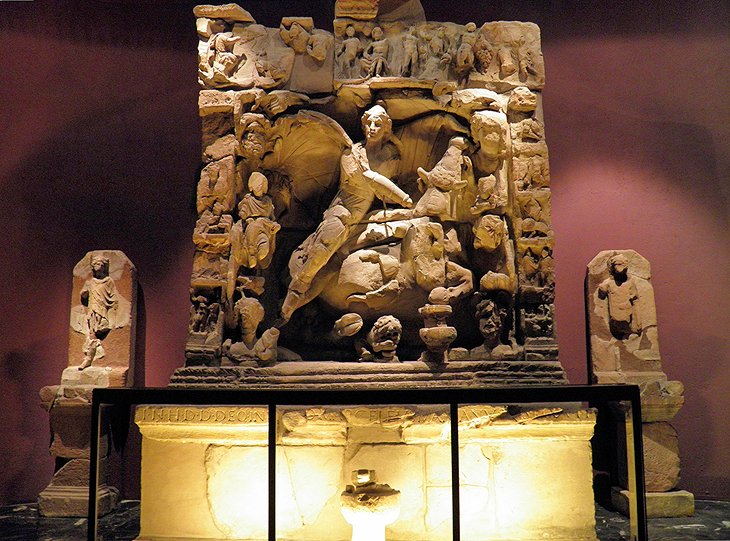
This renowned museum is housed in La Cour d'Or, a building named after the legendary palace of Merovingian Kings, which once stood here.
This museum occupies several historic monuments: Gallo-Roman baths; the former Abbaye des Petits Carmes; a 15th-century granary; and the Eglise des Trinitaires, an elegant Baroque church that dates to 1720.
The collections include three main disciplines: antiquities, medieval art and history, and fine arts from the European schools.
An ancient building (thermal baths of the 2nd-century AD) houses the Collections Gallo-Romaines (Antiquities Collections), which are considered the best collections of their kind in northern France. Exhibits display statues, mosaics, and everyday objects from the Gallo-Roman city of Divodurum (present-day Metz).
The Collections Médiévales (Medieval Collections) feature Merovingian tombs, religious art, and medieval treasures of the 11th century. A highlight of the collections is the chancel from the Eglise Saint-Pierre-aux-Nonnains, the church of Benedictine monastery that was founded in the 6th century.
The Collections Beaux-Arts (Fine Arts Collections) include French, Dutch, German, and Flemish paintings from the 16th to 20th centuries, as well as artworks by Ecole de Metz painters. Masterpieces by Eugène Delacroix, John Singer Sargent, and Jean-Baptiste-Camille Corot are some of the highlights.
The Musée de la Cour d'Or is in the Colline Sainte-Croix quarter, the historic heart of Metz, where archaeological relics from as far back as the Bronze Age have been found. This enchanting hilltop quarter has many pleasant small squares, winding medieval streets, and elegant old mansions.
Address: 2 Rue du Haut Poirier, Metz
Official site: http://musee.metzmetropole.fr
Porte des Allemands
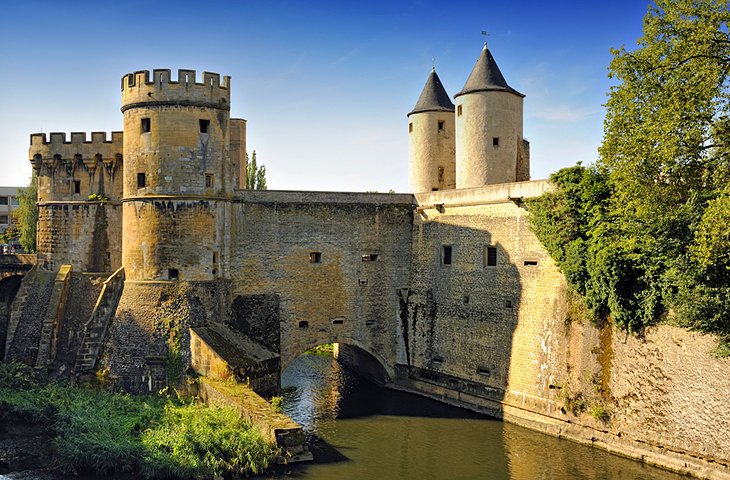
Between the Boulevard Maginot and the Rue des Allemands stands the most emblematic site of Metz, the Porte des Allemands (which translates to "Door of the Germans"). The monument was named after the Teutonic Knights who had a hospital nearby.
The Porte des Allemands is the last relic of the town's medieval ramparts, which originally included fortified walls, gated entrance doors, and defense towers. From afar, it looks like castle standing above the Seille River.
The Porte des Allemands features two immense 13th-century towers and two 15th-century bastions, as well as a bridge that spans the Seille River. Between the two towers is a terrace designed to accommodate artillery.
It is easy to envision where the drawbridge of the Porte des Allemands once stood, allowing entry to visitors or preventing hostile invaders from attacking. For more than three centuries, the town's ancient walls successfully provided protection against aggression.
Today the Porte des Allemands is open to the public for visits, free of charge. Part of the structure has been converted into a walking path, which starts alongside the Seille River and continues for a short stroll (about 15 minutes) to the Pont des Grilles (bridge) at the Moselle River.
The surrounding area is also worth exploring. The Porte des Allemands is in the Quartier Outre-Seille, a medieval neighborhood with narrow cobblestone streets, interesting old churches, and artisan shops. The Rue Taison in particular has many locally owned boutiques.
Opéra-Théâtre de l'Eurométropole de Metz

One of the most exquisite theaters in France, the Opéra-Théâtre de l'Eurométropole de Metz is also the oldest working opera house in France.
Inaugurated in 1752, the building features Neoclassical architecture typical of the 18th century. The statues depicting the muses (on the rooftop balustrade) were made by the local sculptor Charles Pêtre in 1858.
The opulent auditorium, with its gilded balustrades, exemplifies an Italianate theater. Originally the theater had seating for more than 1,300 guests, however it now has 750 seats after an update in 1963.
Refurbished in 1982 with new velvet upholstery, the auditorium features garnet tones typical of Second Empire theaters. The intimate space offers perfect viewing from any seat.
A full calendar of opera, ballet, and theater performances is presented throughout the year. The program ranges from classical music to modern theater productions. A permanent staff of performing artists and artistic directors stage over a dozen different productions annually (from September through June).
The theater graces the Place de la Comédie, an 18th-century square enclosed by Neoclassical buildings, including the Basilique Saint-Vincent. The Saint-Vincent Church was founded in the 13th century but has a facade that dates from 1768 to 1786. This area, known as the Quartier des îles, is the quarter of Metz that consists of the islands of the Moselle River.
Continuing farther into the neighborhood offers a rewarding experience. Much of this neighborhood is surprisingly undiscovered by most tourists, with quiet narrow lanes that lead to beautiful old buildings and scenic canals.
Address: 4 - 5 Place de la Comédie, Metz
Eglise Saint-Maximin
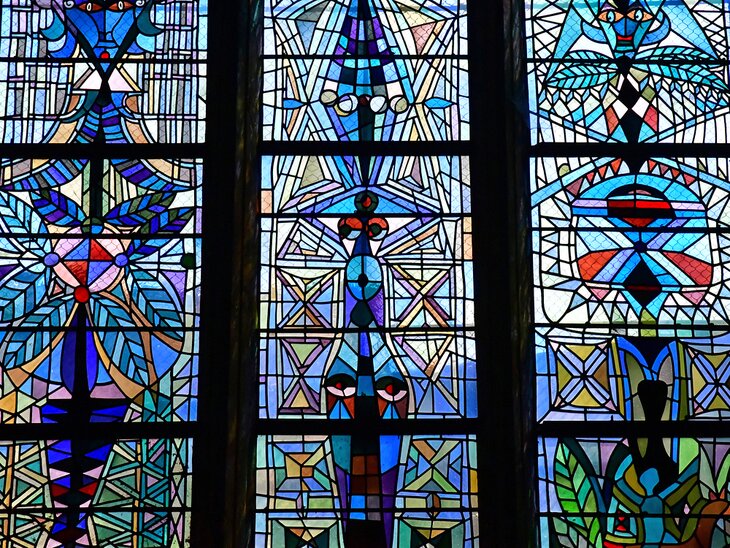
In the charming neighborhood of Quartier Outre-Seille, south of the Porte des Allemands, the Eglise Saint-Maximin is a truly special spiritual site. The simple exterior does not prepare visitors for the uncommon beauty of this breathtaking church, which dates back to the 12th century.
The stunning interior features 24 stained-glass windows made by Surrealist artist Jean Cocteau in the 1960s, which are considered masterpieces of creativity and craftsmanship. The whimsical pastel blue, green, pink, yellow, and lavender-hued windows flood the sanctuary with a brilliant glow, lending an ethereal ambience.
Cocteau had traveled extensively in Africa, Oceania, and the Americas, and these exotic places influenced his creative vision. The windows feature surprising religious motifs, as well as secular symbols such as doves, leaves, flowers, and geometric designs that are not typically found in a house of worship.
Address: 61 Rue Mazelle, Metz
Eglise Saint-Pierre-aux-Nonnains
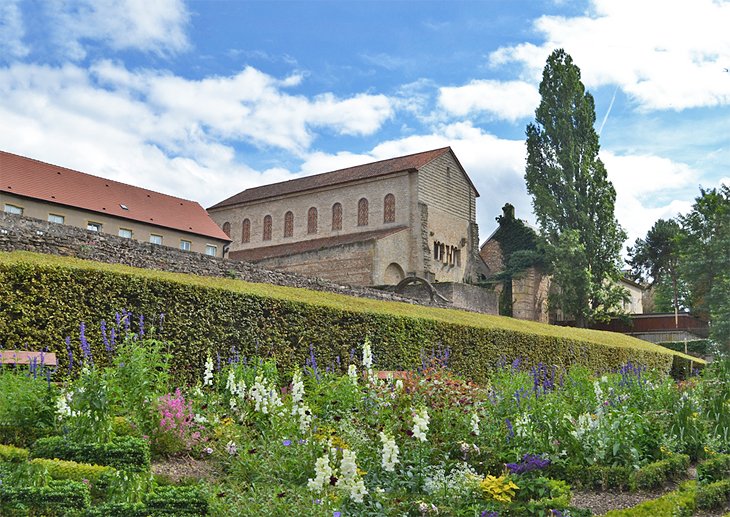
The Eglise Saint-Pierre-aux-Nonnains is one of the oldest monuments in Metz. The original building was constructed in the 4th and 5th centuries, during the Gallo-Roman era, and used as a gathering place or as fitness rooms in a spa complex.
The building was later converted into a Benedictine abbey founded in the 7th century. In the 16th century, the church was incorporated into the town's defenses and served as a military warehouse.
Today, the Saint-Pierre-aux-Nonnains church is an architectural reminder of more than 1,000 years of history. The church has been converted into a cultural center and offers an incomparable setting for music concerts and temporary exhibitions.
Tourists will also enjoy exploring the area around the Eglise Saint-Pierre-aux-Nonnains, the Quartier de la Citadelle neighborhood, which has many stately old buildings and pleasant green spaces.
Address: 1 Rue de la Citadelle, Metz
Chapelle des Templiers
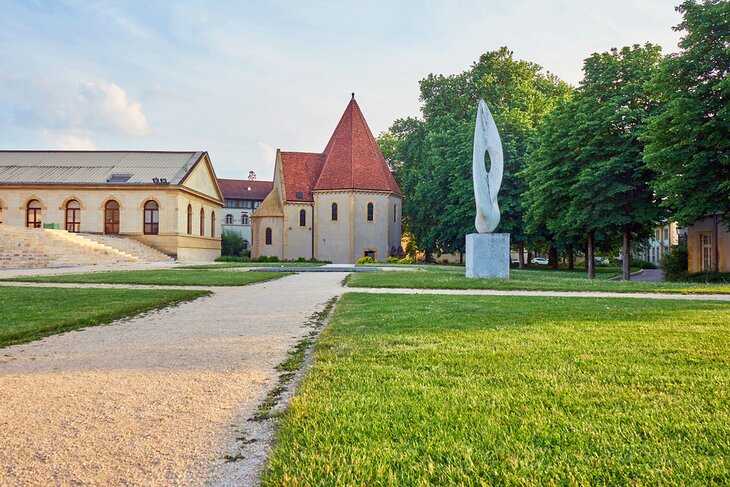
In Metz's Quartier de la Citadelle, the Chapelle des Templiers (Chapel of the Knights Templar) dates from the 12th century.
This unusual octagonal-shaped building is the only example of an octagonal chapel in the Lorraine region. Built from 1180 to 1220, this rare monument shows the transition between Romanesque and Gothic architecture.
The Chapelle des Templiers is found near the Eglise Saint-Pierre-aux-Nonnains and is part of the Cité Musicale-Metz, which comprises several performance venues for music concerts.
Address: Rue de la Citadelle, Metz
Place Saint-Louis
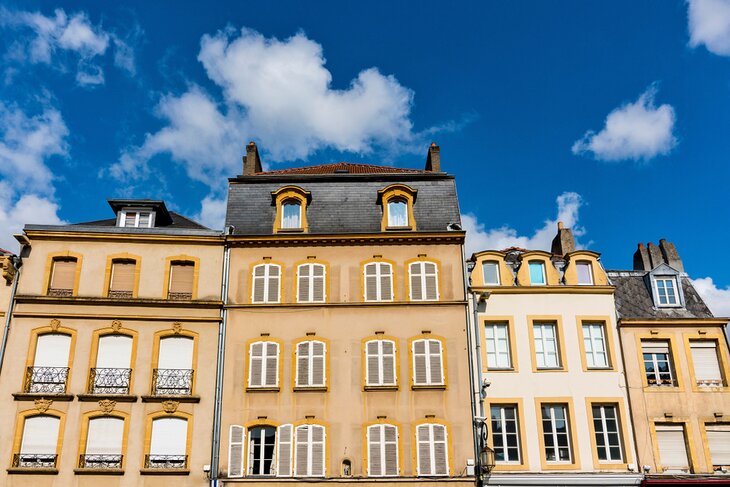
At the historic center of Metz in the Colline Sainte-Croix quarter, this town square dates back to the Middle Ages and is evidence of Metz's prosperity in previous centuries.
With its atmospheric arcades and Renaissance merchants' houses, the Place Saint-Louis has a distinct old-world charm and is filled with things to do. The layout of the Place Saint-Louis resembles public squares in Italy.
The arcades of the Place Saint-Louis are filled with boutiques, restaurants, and cafés, making the square a center of activity during the day and a lively place to enjoy an evening meal. Some of the dining establishments use the square for outdoor seating when the weather is agreeable.
During the holiday season, the Place Saint-Louis becomes a venue for the Marché de Noël. In a lively setting with festive decorations, this traditional Christmas Market features artisans' stalls selling handcrafted items and special gourmet products. The Marché de Noël takes place from mid-November through December.
Temple Neuf
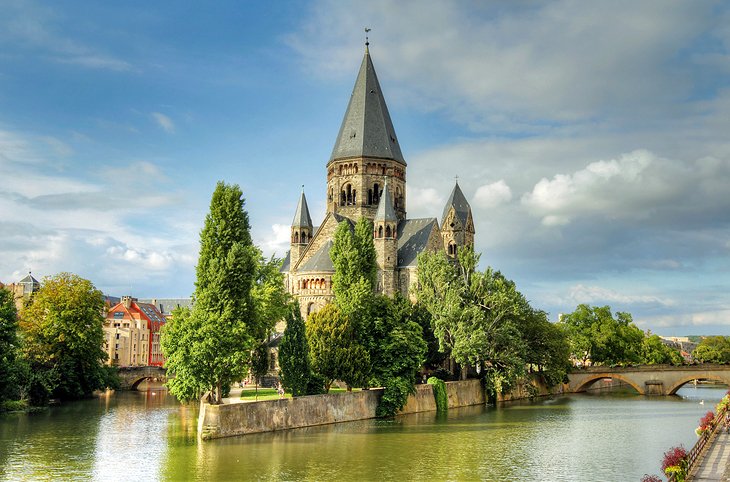
The Temple Neuf stands in the Jardin d'Amour (Garden of Love) at the end of the Place de la Comédie. The building is best viewed from the Quai Paul Vautrin. From this vantage point, the Temple Neuf is seen soaring above the island of Quartier des îles surrounded by the Moselle River.
When illuminated at night, the building is reflected in the river, offering a spectacular scene. The church was built from 1901 to 1904 in grey sandstone and contrasts with the Neoclassical architecture of the nearby Opéra-Théâtre.
The Romanesque Revival-style of the building was inspired by the cathedrals of Speyer and Worms in Germany's Rhineland region. The architectural elements give the chapel a medieval look, even though it was built in the 20th century.
Listed as a Historic Monument, the Temple Neuf continues to serve as a house of worship for the Protestant community. Religious services are held here year-round every Sunday morning from 10:30am until 12pm.
The Temple Neuf also hosts cultural events such as art expositions, concerts, and conferences.
Address: Place de la Comédie, Metz
Esplanade
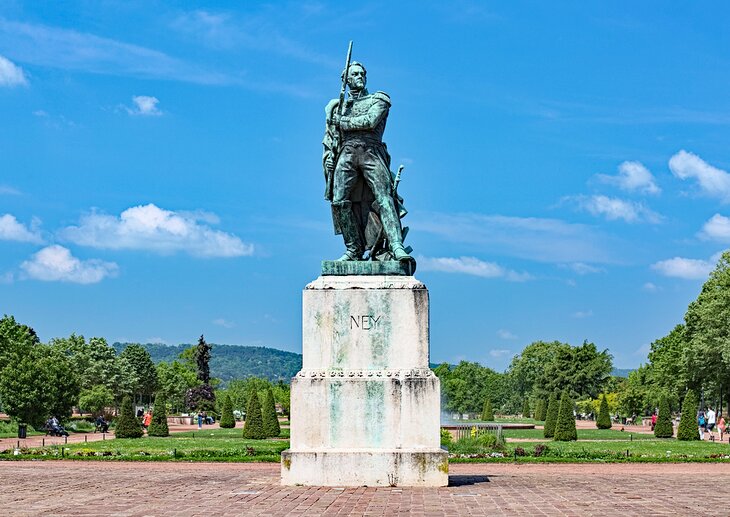
One of the best places to visit in Metz for a moment of relaxation, the Esplanade provides refreshing scenery at the heart of the city. Leafy lime and chestnut trees, verdant lawns, and vibrant flowers give visitors the impression of being far from the urban bustle.
The park's wide pedestrian promenade invites leisurely strolls. From the Esplanade's terrace, there are sweeping views of the Moselle Valley and Saint-Quentin Mountain. Visitors can also admire 19th-century and 20th-century statues in various corners of the park.
In the Quartier de la Citadelle, the Esplanade is flanked by monumental buildings. On the north side is the 18th-century Palais de Justice (Law Courts). To the south is the Eglise Saint-Pierre-aux-Nonnains. The Chapelle des Templiers is also nearby.
Avenue Foch
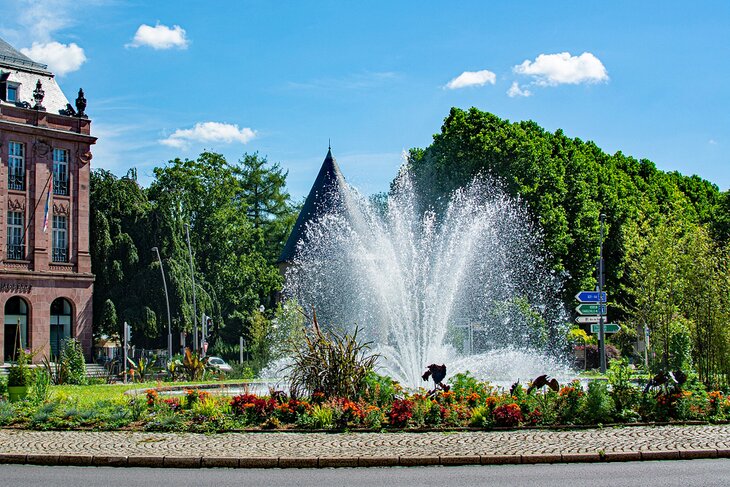
In the Quartier Impérial, the Avenue Foch showcases a striking mix of architectural styles. The avenue surprises visitors with its mishmash of classic French mansions, faux medieval castles, and eclectic Art Deco buildings.
The buildings were all created at the turn of the 20th century by architects who wanted to dabble in experimental styles. The result is an urban landscape that is unique in France and Europe.
Day Trips from Metz
Abbaye des Prémontrés

Hidden in the Forest of Coucy, this idyllic abbey was founded in 1121 as part of the Premonstratensian order, one of the great religious orders of the Middle Ages along with the Cistercians and Benedictines.
The abbey was rebuilt in the 18th century and classified as a Historic Monument in 1910. The exceptional architecture features special details, including spiral staircases, ornately decorated halls, and a harmonious cloister. The refectory with a vaulted ceiling exemplifies the beauty of 18th-century architecture.
Often used as a venue for weddings and conferences, the abbey has a three-star hotel that offers comfortable modern accommodations and breakfast. The Abbaye des Prémontrés is 30 minutes away from Metz or Nancy by car, and 90 minutes away from Paris by TGV train.
Address: Abbaye des Prémontrés, BP 125, 54705 Pont-à-Mousson
Château de Pange
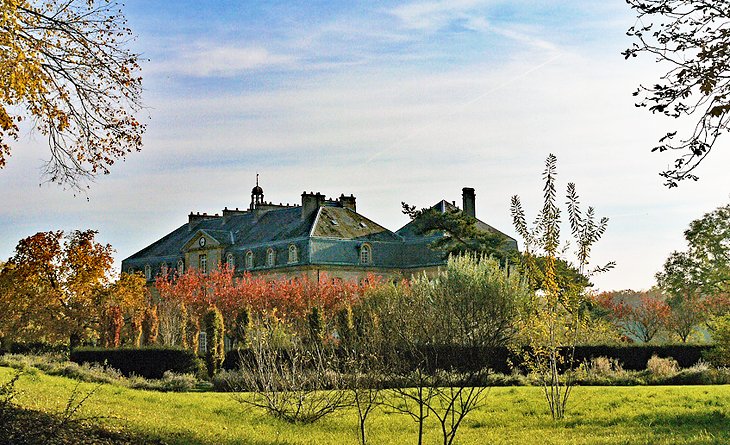
The Château de Pange was built in 1720 for the Marquis of Pange, Jean-Baptiste Thomas, who came from an aristocratic family of Lorraine. The descendants of this family still own the property. The family's exceptional heritage is on display in the castle's lavish reception rooms.
The château is open to the public for guided tours. It's also possible to just visit the château's park and gardens, which offer the opportunity for a stroll through lush scenery and harmonious landscaping. Entry to the château and gardens require separate tickets.
This elegant château is nestled in the countryside 15 kilometers from Metz.
Address: Château de Pange, 57350 Pange
Roman Aqueduct
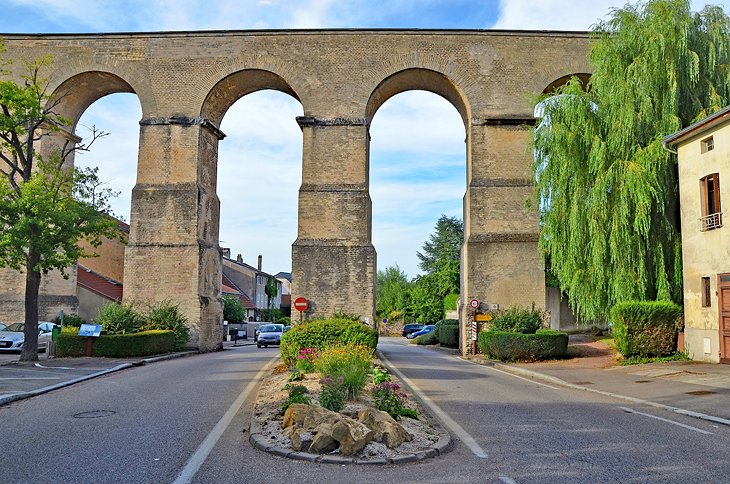
This impressive ancient site is just a short drive (15 kilometers away) from Metz. The well-preserved remains of the 1,128-meter-long by 25-meter-high Roman aqueduct are evidence of the remarkable scale and design of a 2nd-century CE monument that once provided water for fountains and thermal baths to the Roman city of Divodurum (Metz).
Address: Jouy-aux-Arches, 57130
Sillegny
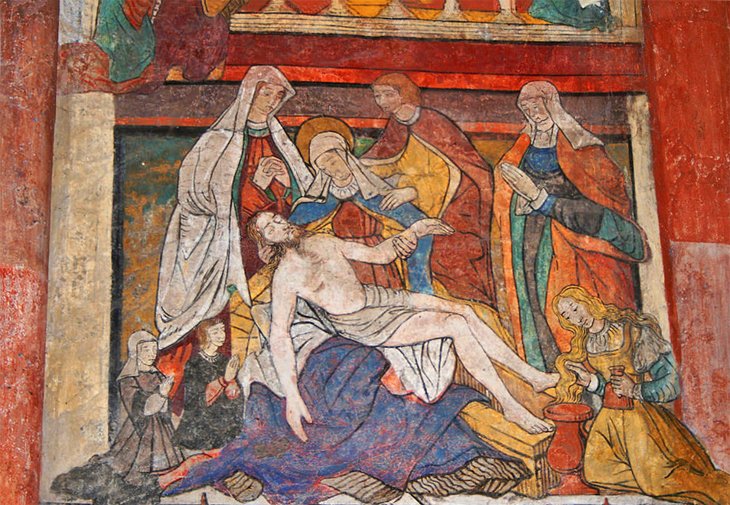
The little village of Sillegny (25 kilometers from Metz) has a lovely church that is well worth a detour for those traveling by car. The Eglise Saint-Martin is famous for its medieval frescoes that were created in the 16th century.
More Related Articles on PlanetWare.com
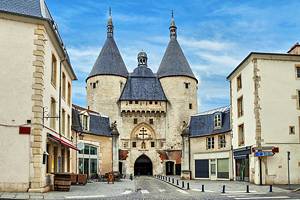
The Beautiful Lorraine Region: The unspoiled countryside of the Lorraine region is dotted with beautiful historic towns. A must-see destination is Nancy (a 50-minute drive or train ride from Metz) with its elegant UNESCO-listed squares and top-notch art museums. Another worthwhile detour is Toul (a one-hour drive away), which boasts a marvelous Gothic cathedral built in the 13th and 14th centuries.
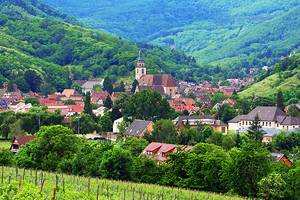
Quaint Villages and Historic Towns of Alsace: Another picturesque rural area nearby is the Alsace region with charming historic towns such as Colmar (a two-hour train ride). The most important city in Alsace is Strasbourg (a 90-minute train ride), which boasts a magnificent cathedral and atmospheric neighborhoods that date back to the medieval era.
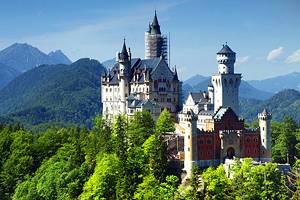
Luxembourg and Germany: Luxembourg City in Luxembourg is less than a one-hour drive or a 45-minute TGV train ride from Metz. With its UNESCO-listed Old Quarter and lovely gardens, Luxembourg City is one of the most appealing cities in Europe. For those who'd like to explore some of the highlights of Germany, the town of Mainz in Germany's Rhine Valley is brimming with cultural attractions, including ancient churches and interesting museums.



